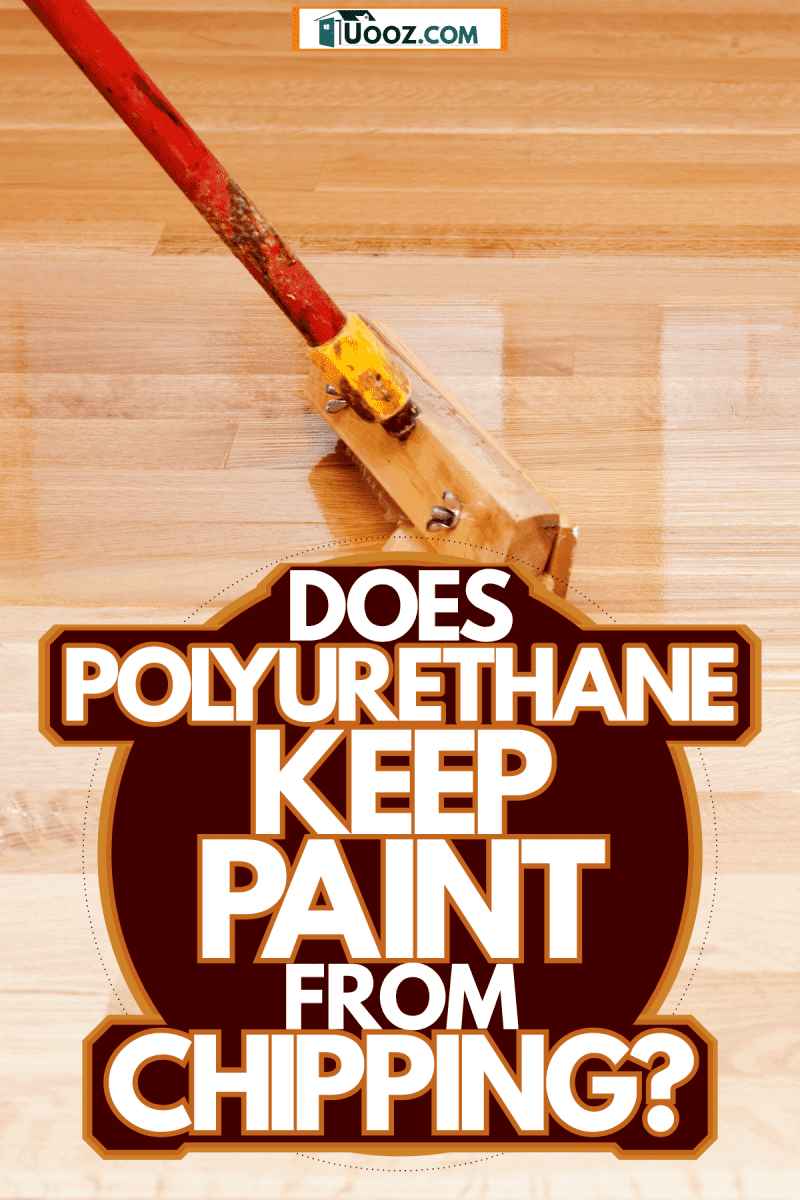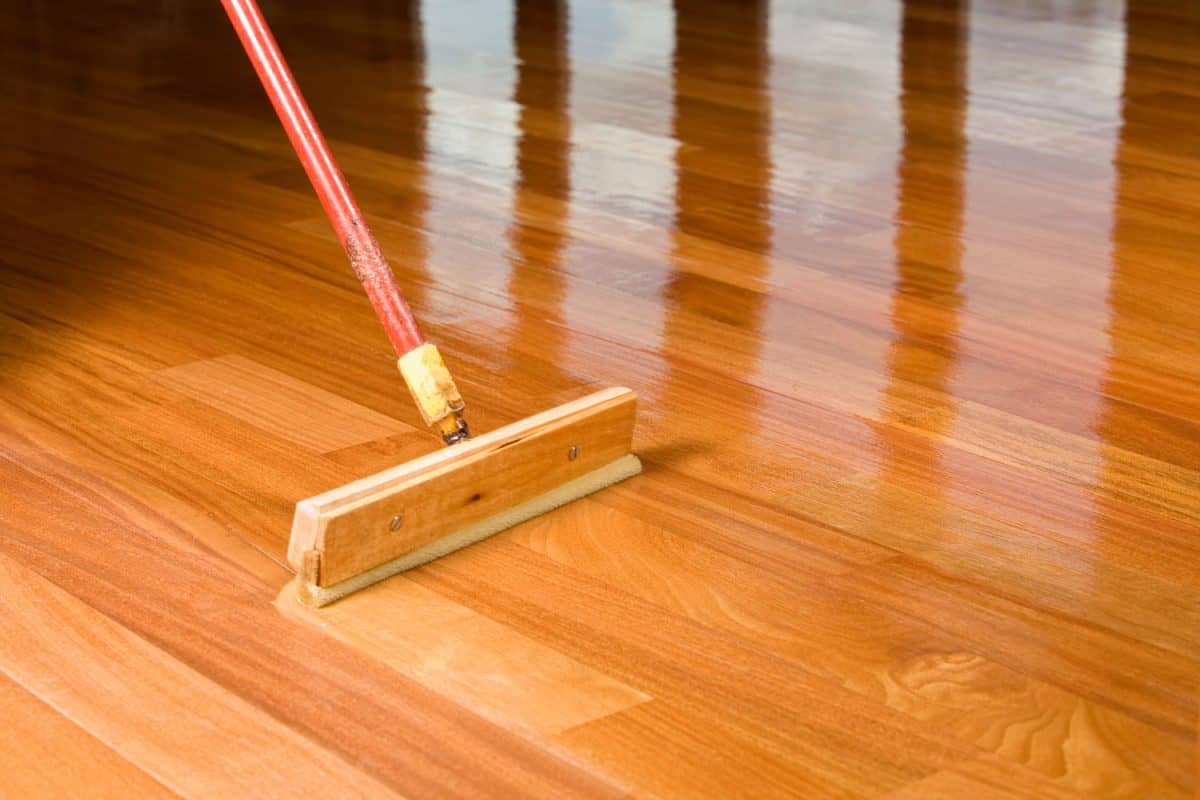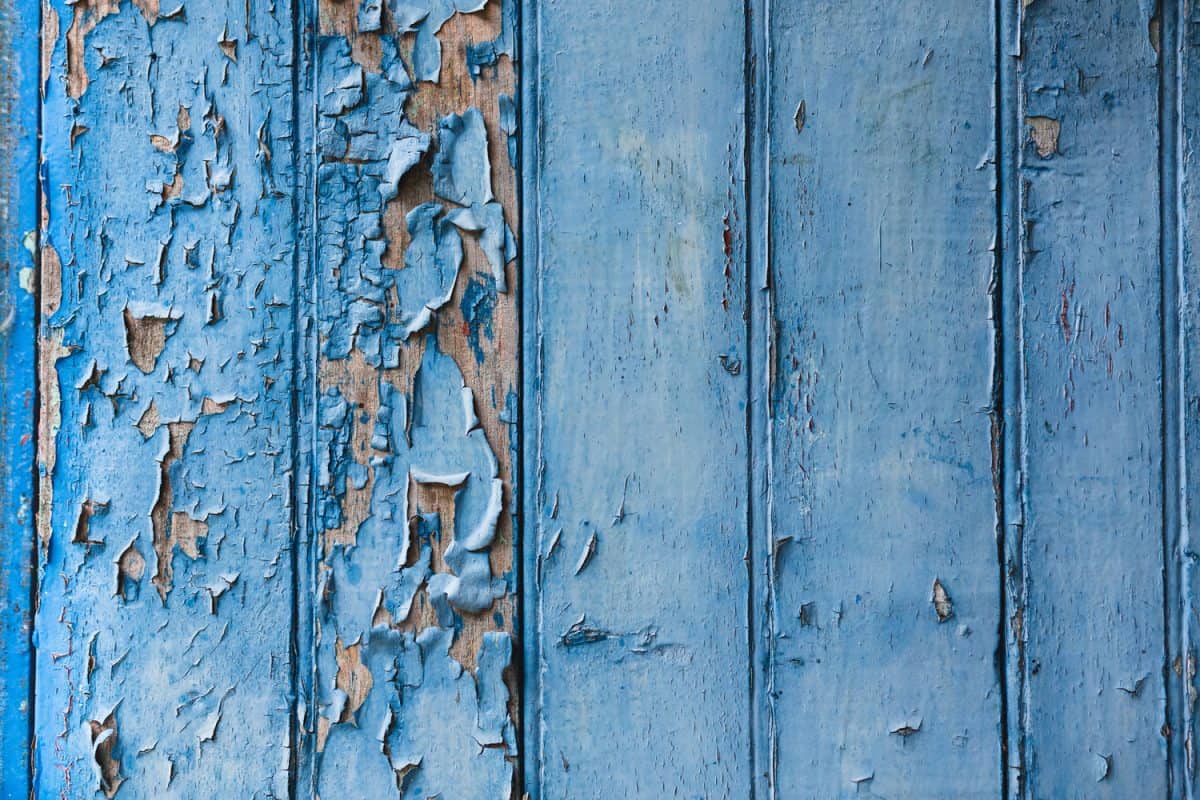Are you looking for a way to protect the paint on your latest project? If you're thinking about incorporating polyurethane into your next project, you've come to the right place. We've created this post and filled it with everything you need to know about using polyurethane over paint.
Yes, polyurethane can be used as a protective coating over paint. It will protect the paint from chipping and peeling.
There are some more things you should know about polyurethane before using it for your project. There are also other ways to seal paint that might be a better option for you. Keep reading to learn all the in's and out's of paint protection.

Why is my Paint Chipping so Easily?
Many things will cause paint to chip easily. Most of the reasons are due to poor preparation of the surface to be painted. This list will provide you with insight into avoiding having your paint chip quickly and easily. The mistakes discussed here are the most common reasons for poor paint adhesion.
- Prepare the surface appropriately by washing it or sanding it down to remove the old finish.
- Use a good primer before painting.
- Paint in low humidity. Avoid painting on rainy or humid days unless you have a temperature-controlled area to paint in.
- Choose the appropriate type of paint. If the project is exposed to the elements, make sure to use exterior grade paint.
- Use a protective topcoat over your paint.
How do You Seal Paint, so it Doesn't Chip?
There are several topcoat products available that can be used to seal paint to prevent it from chipping. Polyurethane is one product that will achieve this, but you can also find pastes and waxes to achieve the same goal. If your project is intended for exterior use, make sure to use a product rated for such.
Minwax Polycrilic Wood Finish
This polyacrylic topcoat is excellent for paint protection on interior projects. Click here to see it on Amazon.
What Happens if you put Polyurethane on Paint?
Oil-based polyurethanes tend to yellow with time, so if you are using light-colored paint, you may want to use a water-based protective coating. When used over paint, polyurethane protects the finish from sun, dirt, mold, and bacteria. It also guards the surface against scratches, scuffs, and other damage while providing a lasting finish.
Polyurethane is available in a variety of finishes, like semi-gloss and matte.
What Happens if you Put Polycrylic on Paint?
Polycrlic is a water-based topcoat available in a variety of finishes like satin and semi-gloss. When used over paint, it helps protect the paint from dirt and damage, making the finish last longer. The appearance will vary depending on the finish you choose.

What is the Difference Between Polyurethane and Polycrylic?
Polyurethane was originally only available in oil-based formulas, which take a long time to dry but result in the toughest protective finish. Newer water-based polyurethane formulas combine the protective coating with a faster drying formula and easier cleanup but are less durable than oil-based formulas.
Polycrlic is a water-based formula that quickly dries and provides a thin protective coating for gently used interior furniture.
Minwax Clear Polyurethane
This oil-based polyurethane formula works well over dark paint colors. Click here to check it out on Amazon.
What is Spar Urethane?
Spar urethane is the best option to finish exterior projects. It is a polyurethane formula created specifically for exterior applications. This urethane is designed to hold up to damage from weather and UV light, as well as physical damage like bumps and scratches.
Minwax Spar Urethane
This clear spar urethane is excellent for extreme durability inside and outside. Click here to see it on Amazon.
What is Spar Varnish?
This type of varnish is designed for marine vehicles, which holds up well to the elements and the sun. It provides a special protective coating and adheres well to painted surfaces too. While it is intended for boats, it can be successfully used for exterior projects. This type of finish would be especially valuable for those who live near the ocean.

When Should You Use Polycrylic?
Polycrylic is well suited for most interior surfaces, but it's not as tough as polyurethane or spar urethane. It is an excellent finish for furniture, cabinets, and crafts. It should not be used on high traffic surfaces like floors or for furniture in humid areas like bathrooms.
When Should You Use Polyurethane?
Polyurethane is excellent for high-traffic surfaces like floors, doors, and cabinets. This finish is suitable for interior and exterior projects, making it easy to keep your finish consistent inside and outside your home. Remember that oil-based polyurethane can yellow with age, which will be evident against a light-colored paint.
When Should You Use Spar Varnish or Spar Urethane?
Spar varnish is a great exterior option for people who live in harsh, humid climates, like near the ocean. Spar urethane is a great option for any exterior project, but it is another topcoat that tends to discolor over time. Spar urethane does not work well over oil-based paints, so you will need to choose a water-based paint if you want to use this as a topcoat.
Can I Paint Over Chipped Paint?
You should scrape and sand away any old paint before applying new primer to the surface. This will ensure a smooth finish that will be less likely to chip again in the future. While you can paint over already chipped paint, it may leave you with an uneven surface containing craters, which won't look as lovely as a properly prepared surface.
If you fill the damaged areas with wood filler, you can avoid these imperfections, but it is best to prepare your surface properly.
How do you Paint Over Cracked Peeling Paint?
To paint over cracked, peeling, or chipped surfaces without removing the entire existing finish, you will still need to do some prep work. Here's a quick step-by-step guide to giving you an idea of the work required:
- Give the area a quick run-through with a paint scraper and remove any fragile chips of paint.
- Fill any remaining rough areas or craters with wood filler.
- Once the wood filler is dry, sand the area quickly to provide a rough surface for the new paint to stick to.
- Wipe the area down to remove any remaining dust.
- Apply primer according to the directions on the package, let it dry.
- Apply the paint according to the directions on the package, let it dry.
- If desired, apply a top coat of your choice according to the directions on the package.
Can You Use a Clear Coat on Oil-Based Paint?
No, do not try to apply a clear coat over oil-based paint. Clear coats work well with acrylic and latex paints, but they react badly when used over oil-based paints. Make sure to read your labels carefully and cross-reference your clear coat choice with your paint choice.
Can You Use Polyurethane Over Chalk Paint?
Yes, polyurethane and polyacrylic can both be used over chalk or milk paints. You may want to choose a topcoat with a matte type finish to maintain the flat look of these kinds of paints. A wax or paste-type topcoat may be a better option as a protective coat for these paints. They are often available in matte finishes and complement the look of flat paints very well.
Jolie Matte Finishing Wax
This finishing wax is available in different shades and creates a practical and beautiful topcoat for chalk paint. Click here to see it on Amazon.
Can You Use a Topcoat Over Spray Paint?
If you want to provide a top coat for a spray-painted piece, you should use clear spray paint as a protective coating. Polyurethane-type top coats do not adhere well to spray-painted surfaces. Although sanding gently between coats can help it adhere, it likely won't look how you intended. Clear spray paint can be found for both interior and exterior surfaces.
Krylon Clear Spray Paint
This clear spray paint is UV resistant, so it should work well for exposed projects. Click here to see it on Amazon.
Covering it All
Now that you know the differences between the types of topcoats and urethanes, you're ready to choose the best option for your project. Remember to prep the surface correctly for the most eyecatching results. You should also read the instructions on applying your topcoat carefully before you begin. Have fun creating!
If you are looking for more advice on finishing a project, you might like our article What Is The Best Paint For Crown Molding? [7 Suggestions]
Another great article that will help you get a perfect finish is How To Use Wood Filler Before Painting.





